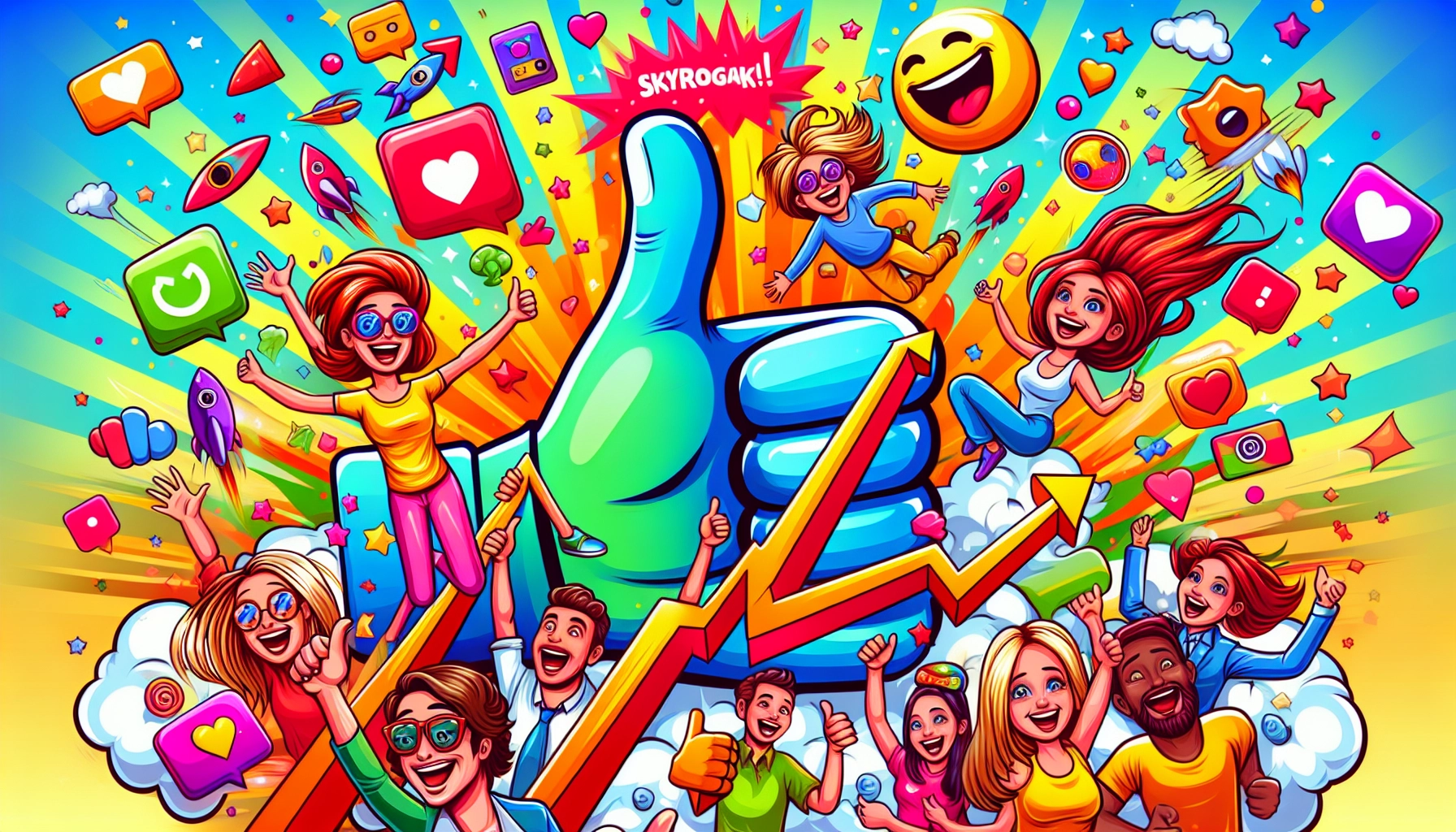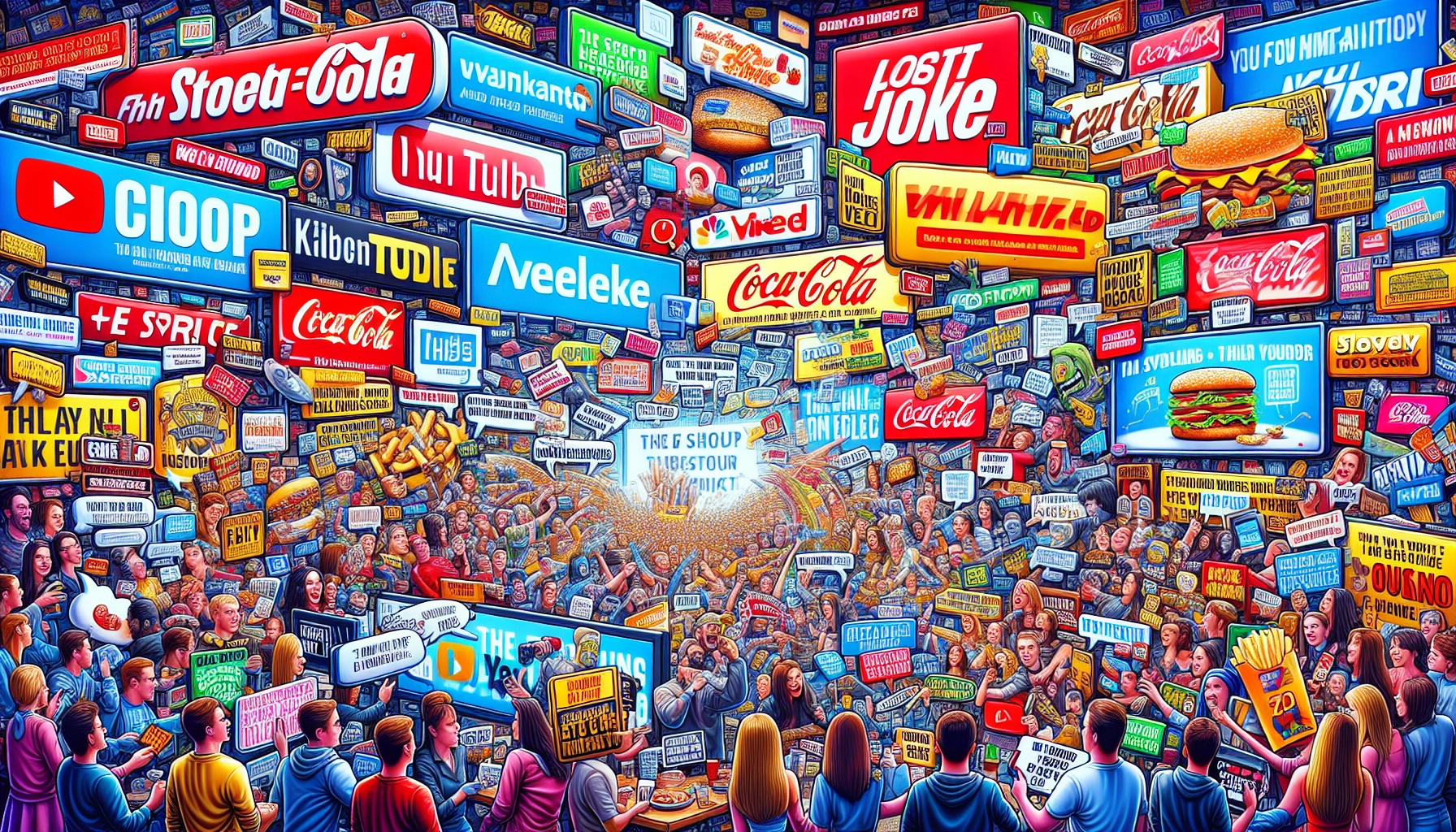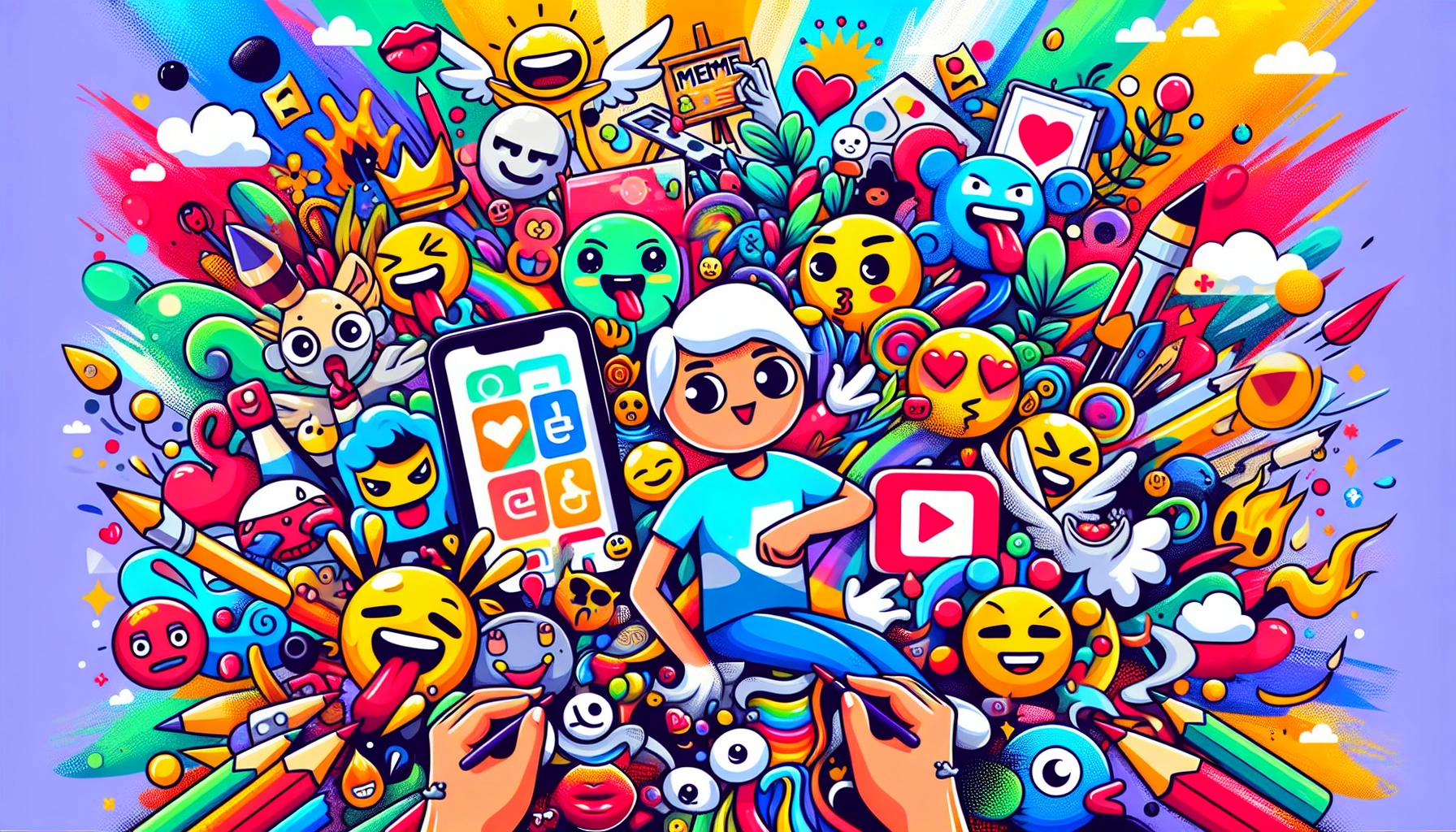Table of Contents[Hide][Show]
Meme marketing in 2025 is a very effective content marketing strategy that uses memes to connect with audiences through humor and relatability. This strategy enhances brand visibility and engagement at a low cost by leveraging existing memes, making it a potent tool for modern marketing.
Key Takeaways
Meme marketing leverages humor and relatability to connect with audiences, especially younger demographics, and it can go viral for a high impact.
Creating effective memes requires understanding the audience, brand voice, current trends, and clever visuals and captions. Brands can enhance this by creating marketing memes, tweaking existing memes to align with their identity, and using online tools like meme generators.
While meme marketing offers low-cost, engaging options, brands must be cautious of potential pitfalls like offensive content and the need to stay current with trends.
Understanding Meme Marketing Strategy

A meme is more than just a funny image or text; it’s a cultural touchstone that hits deep. Memes often convey humorous or relatable messages about workplace frustrations or relationship quirks. That’s what makes them so shareable. Brands can tap into that by incorporating memes into their marketing and staying current, relevant, and memorable.
Meme marketing is the strategic use of humor to achieve specific marketing goals. A casual tone allows brands to connect with younger demographics personally. It makes brands more relatable and helps build emotional connections with the audience. The magic of meme marketing is that it can go viral, reaching a wider audience quickly and effectively, making it a powerful tool in any meme marketing campaign. However, when brands post memes, they must consider the legal aspects, as using copyrighted material without permission can lead to copyright infringement, though many memes may qualify for ‘fair use’ if they meet specific criteria.
To meme correctly, a brand must be in tune with meme culture. So, the content is both entertaining and relatable to the target audience. Memes use their entertainment value to get audience engagement and are a powerful tool in the digital marketing toolbox.
History of Memes
Memes have been around for decades, but as we know it today, the concept of memes originated in the early 2000s with the rise of social media and online communities. The term “meme” was first coined by evolutionary biologist Richard Dawkins in his 1976 book “The Selfish Gene,” describing memes as cultural equivalents of genes capable of replication and evolution. However, it wasn’t until the early 2000s that memes began to take on a life of their own with the emergence of online communities like 4chan, Reddit, and 9GAG.
These communities gave birth to a new generation of memes, often humorous, relatable, and easily shareable. Memes quickly spread across the internet, with popular memes like “Rickrolling” and “I Can Have Cheezburger?” becoming cultural phenomena. Today, memes are an integral part of online culture, with new memes emerging daily and old ones continuing to evolve and adapt.
Components of a Meme
A meme typically consists of three key components: an image, a caption, and a message. The image can be a photo, a screenshot, or a piece of artwork and is often used to convey a humorous or relatable message. The caption is the text that accompanies the image and is used to add context and humor to the meme. The message is the underlying idea or theme of the meme and is often used to comment on current events, pop culture, or social issues.
In addition to these three components, memes often rely on cultural references, wordplay, and satire to convey their message. Memes can also be used to express emotions, opinions, and experiences, making them a powerful tool for communication and self-expression.
Advantages of Meme Marketing

Meme marketing is a goldmine for brands who are willing to get silly. Low-cost, high-impact social media marketing, relatable content for younger audiences, and staying current with trends. Here are the details.
Low-Cost, High Impact
One of the best things about meme marketing is that it’s cheap. Traditional marketing campaigns cost a lot of money. Meme marketing lets you reach a big audience for next to nothing. Memes are naturally shareable, so one funny and relatable meme can create significant buzz without breaking the bank.
This is a big plus for small business marketing. With basic graphic skills and a sense of humor, you can create content that resonates. Instant feedback from the audience means you can adjust your strategy in real-time, resulting in higher engagement and better ROI for any go-to-market strategy.
Relatable Content for Younger Audiences
Memes thrive on relatability, especially with younger audiences like Millennials and Gen Z. The average millennial sees 20-30 memes daily, making them a part of their daily communication. With this much exposure, memes can increase brand awareness and loyalty among younger demographics.
55% of consumers 13-35 share memes weekly and are heavily engaged with this content type. Creating content that taps into popular culture and relatable issues allows brands to develop effective memes that entertain and engage deeply.
Staying Relevant with Trends and Viral Memes
In the world of social media, being on trend is key. Viral memes are a great way to reflect trends and make your brand look current and fun. Monitoring trends means your memes stay relevant and relatable.
Using trending memes means you can reach a wider audience quicker. Joining in on prevalent meme challenges or using a trending meme format will increase your brand’s visibility and engagement and keep you in the public eye.
How to Create Effective Memes for Marketing
Making effective memes isn’t just slapping a funny image with text. It’s about understanding your brand voice, audience, and current trends. The keys to successful memes are brand relevance, audience relevance, visuals, and clarity.
Choosing the Right Meme Format
Pick the proper meme format, and you’ll be golden. Visuals are key to the marketing message and audience engagement. Brands should focus on users’ problems and choose formats for their target audience.
Try different formats, templates, and captions to see what works for your audience. GIFs are quick and shareable, making them an excellent choice for meme marketing.
Crafting Clever Captions
Captions are the soul of a meme. They need to be short and funny. They need to be about the image and the marketing theme. Captions from the meme’s situation make it more relatable and funny.
Good captions not only increase engagement but also make the meme more sticky. You want to poke fun in a way that’s your brand voice and your audience.
Subtle Branding Techniques
Adding brand elements to memes can boost brand recall without killing the humor. Do it by editing memes about your brand, products, or industry, and keep it light.
Creating your marketing memes by tweaking existing memes to align with your brand’s identity can significantly enhance subtle branding techniques. Good meme marketing integrates branding into the content so the audience remembers the brand while laughing. That’s the key to getting the benefits of meme marketing.
Keep it Simple and Personalized
When creating memes for marketing purposes, it’s essential to keep it simple and personalized. Memes should be easy to understand and relate to and should resonate with your target audience. Avoid using complex or inside jokes that may not be familiar to your audience, and focus on creating authentic and genuine memes.
Personalization is also key when it comes to meme marketing. Use language and imagery that speaks to your audience, and avoid using generic or cookie-cutter memes that may not resonate with your target audience. By keeping it simple and personalized, you can create compelling, engaging, and memorable memes.
Successful Social Media Meme Marketing Campaigns

So, let’s look at some successful campaigns from big brands. Netflix, McDonald’s, and BarkBox have all used meme marketing. These will show you how powerful a hilarious meme can be when incorporating and sharing memes for your meme.
Netflix
Netflix has got meme marketing down to a tee by speaking to us through travel experiences and funny content. From current hits to old-school classics, they’ve got something for everyone.
They’ve generated significant buzz and engagement on Facebook, Twitter, and Instagram stories and are a favorite among people under 35.
McDonald’s
McDonald’s uses self-deprecation and meme templates to be more relatable and remarkable. Putting their products into pop culture makes them more engaging and wider-reaching.
Seasonal items like the Shamrock Shake are promoted through meme content, so these campaigns are funny and sales-driven. This strategy makes McDonald’s one of the popular brands in the meme marketing space.
BarkBox
BarkBox uses humor that speaks to dog people, so they engage with their audience. Their meme marketing strategy is to copy, paste, and post. Easy peasy to keep the funny content flowing.
Campaigns like ‘Dog Mood Swings’ tap into the fact that we all love and get dogs. Their memes are super relatable and shareable, and they know their audience so well.
Best Practices for Meme Marketing

Meme marketing strategy tips. Let’s get into it.
Understand Your Audience
You need to know your audience’s interests and humor style for meme marketing. Memes must land with your audience’s sense of humor and your brand.
Market segmentation and demand analysis can help you find user personas so your memes are on brand and values. That’s how you avoid negative branding and make your memes land in a fun way.
Stay Authentic
Authenticity is key in meme marketing. When memes are real, they’re funny and relatable. Real memes are a reflection of a brand’s character and values.
Monitor Performance and Iterate
Feedback is key to your meme strategy. Look at engagement, shares, and CTR to measure your meme marketing. Memes are short-lived, so you need to keep your content fresh.
Be ready to deal with the backlash and adjust your strategy based on the metrics.
Using Memes in Your Marketing Strategy
Memes can be a powerful tool in your marketing strategy, allowing you to connect with your audience uniquely and engagingly. Here are some tips for using memes in your marketing strategy:
Social Media: Share Memes on Twitter, Instagram, and Facebook
Social media is the perfect platform for sharing memes, with billions of users across Twitter, Instagram, and Facebook. Share your memes on these platforms to reach a wider audience and increase engagement. Use relevant hashtags to make your memes more discoverable, and engage with your audience by responding to comments and messages.
When sharing memes on social media, keep them concise and visually appealing. Use eye-catching images and captions that are easy to read and understand. Avoid using too much text or complicated language, and focus on creating simple, funny, and relatable memes.
By incorporating memes into your social media marketing strategy, you can create a more engaging and memorable brand experience for your audience. Whether you want to increase brand awareness, drive website traffic, or boost sales, memes can be a powerful tool in your marketing arsenal.
Potential Risks in Meme Marketing
Meme marketing has its perks but also drawbacks. Legal problems, bad branding, and the need to stay relevant are some of the things you need to watch out for. Knowing these will help you avoid them.
Avoiding Offensive Content
Don’t be offensive. Brands shouldn’t be insensitive.
Check that the meme makes sense for everyone. Think outside of your box and look at it from multiple perspectives. You want to do this type of thinking beforehand, not after something goes wrong. The goal is to prevent the worst case in advance.
Keeping Up with Trends
In digital marketing, you must stay on top of viral memes or lose engagement. Memes that are no longer trending will lose their impact and become ineffective. So, you need to be monitoring social media and pop culture.
Engaging with meme culture regularly keeps your brand relevant and fresh. Tracking trends allows you to create memes that resonate with younger audiences and popular culture and increase brand awareness and engagement.
Managing Negative Feedback
Meme marketing has negative feedback built in, often from misinterpreted or lousy content. Avoid the bad content, and make sure your memes align with your brand and voice.
Track your audience metrics to adjust and improve next time.
Tools for Creating Memes

You don’t need to be a graphic designer to create memes. Canva, ImgFlip, and Supermeme.ai have covered you with easy-to-use interfaces and huge libraries to help you quickly create memes. These tools also allow you to make your marketing memes by tweaking existing memes to align with your brand’s identity.
Canva
Canva has millions of stock images and graphics for your meme designs. It has templates for all themes and styles, so creating awesome memes is super easy. It is also an excellent tool for creating memes to share on social platforms.
ImgFlip
ImgFlip is simple to use to make memes. Great for creating and editing memes fast. Marketers can use ImgFlip to make memes for their campaigns.
Supermeme.ai
Supermeme.ai is an AI tool that creates memes fast. Easy interface to create memes with AI help. Perfect for brands and marketers who don’t have design skills.
Summary
Marketing campaigns that utilize memes offer a potent and budget-friendly approach to bolstering audience engagement and enhancing a brand’s visibility. Mastery in meme creation, which includes selecting an appropriate format, devising witty captions, and subtly integrating branding elements, allows brands to tap into the advantages of utilizing memes for marketing purposes.
Brands such as Netflix, McDonald’s, and BarkBox have showcased successful campaigns illustrating how effectively memes can forge personal connections with audiences. Adhering to established best practices while remaining cautious of any potential pitfalls associated with meme-based marketing efforts can lead to a significant impact while maintaining long-term viability. Capitalize on the comical appeal and widespread shareability of memes as strategic tools to elevate your brand’s presence through engaging marketing campaigns that leave lasting impressions on consumers.
Frequently Asked Questions
What is meme marketing?
Meme marketing is all about using humor and relatable content to connect with your audience, making your brand more engaging. By incorporating memes into your campaigns, you can effectively convey your messages in a fun and relatable way.
Why is meme marketing effective?
Meme marketing works wonders because it combines humor with relatability, making content more engaging and shareable. This viral potential allows brands to reach a broad audience without spending much, which is pretty powerful!
How can I create effective memes for my brand?
To make effective memes for your brand, pick a fitting format, write witty captions, and subtly include your branding.
What are the risks associated with meme marketing?
Meme marketing can be risky due to potential legal issues around copyright, the chance of negative branding from offensive content, and the constant need to keep up with trends.
What are the best tools I can use to create memes in 2025?
You can use tools like Canva, ImgFlip, or Supreme. I can easily create fun and engaging memes. They all have user-friendly interfaces and plenty of resources to help bring your meme ideas to life!
 10 Proven B2B Lead Generation Strategies for Instant Results
10 Proven B2B Lead Generation Strategies for Instant Results